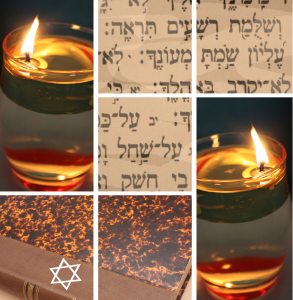During the early stages of the wedding ceremony, the first order of business is the completion, signing and witnessing of the ketubah, or marriage contract. This contract is required by rabbinic law and, according to some Talmudic authorities, actually dates back to Biblical times.
The ketubah, which is traditionally read out loud under the chuppah, is written in Aramaic, which was the spoken language of the Jews during Talmudic times when the wording was institutionalized. This document details the husband’s obligations to his wife, including food, clothing, dwelling and intimacy mandated by the Torah.
The ketubah, which is a legally binding document, also creates a lien on all his property and his estate to pay his wife a sum of money should he divorce her or predecease her. These monetary commitments, from the husband to the wife, were enacted by the Sages to protect the woman, and that the husband should not wantonly consider divorce. “It should not be light in his eyes to divorce her.”
The document is signed by two witnesses, who have observed the groom’s acceptance of all the obligations within the ketubah by way of a kinyan, a type of acquisition affected by lifting up an object given to him by the rabbi officiating. The ketubah, once signed, has the status of a legally binding agreement in Jewish law, which in some countries is also enforceable by civil law.
The ketubah is not part of the actual betrothal of the wedding per se, but is a prerequisite for the wedding to take place once the financial agreements, enacted by the Talmudic sages, are in place. The Ketubah was enacted as a protection of the rights of the bride, and the sages did not allow the wedding to commence until that protection was in place.
The ketubah is the wife’s possession and it remains in her care. It must remain in a safe place throughout the couple’s married life, such as in a safe or safety deposit box, as it serves as a sort of standing license in Jewish law for the couple to live as man and wife.
Because the ketubah is the tangible evidence of this momentous occasion in their new life together, it is sometimes decorated or written as an illuminated manuscript. Some couples frame it and display it in their home as a meaningful work of art, one which testifies to their home being built upon the timeless foundation of the chuppah and meaningful concepts of the Jewish wedding. Many have a simple ketubah written and not displayed, kept in a safe or other safe place.
The ketubah is a testimony for the respect the early sages had for the Jewish woman, ensuring her protection and that she is provided for properly. This is the message given to the Jewish man whereupon having the ketubah signed before marching to the chuppah. The hope was and is that the groom will take that to heart and live a life of respect and dedication to his wife, “in the way of Jewish men to Jewish women.”
Sincerely,
Rabbi Yerachmiel Fried


